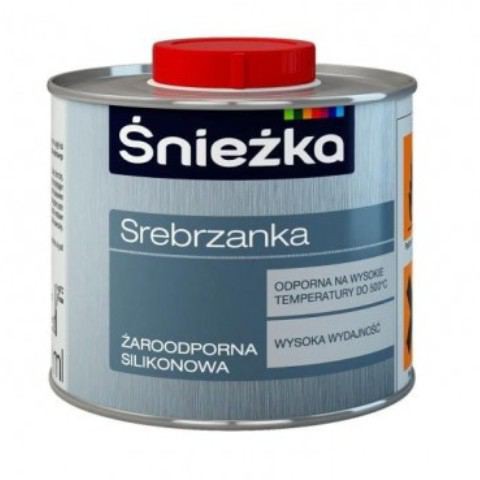
Repair is expensive, but, unfortunately, notvery long-term. But you want the fresh coating to last as long as possible. Most modern materials can not boast of such properties. Then the proceeds come to old, time-tested funds. For example, powder "silver". This coating is widely known for its wear-resistant properties, resistance to environmental influences.

In this article, we will talk about the amazing properties of this material and learn how to prepare "silver" from the powder in the home.
This wonderful tool would rather be calledAluminum. In spite of the beautiful name, there is not a drop of silver in its composition. The powder consists entirely of fine aluminum and the waste of this material. Simply put, the powder "silver" - is milled in the dust aluminum. That's why it has such a beautiful silvery hue.
To obtain a color composition "silver"(powder) is bred to the desired consistency by special means, which we will discuss below. The mixture obtained in this way is widely used for coloring various surfaces.
If you do not want to bother, you can buy instore or market ready paint and use it for the intended purpose. However, in this case, you run the risk of catching the tricks of thrifty manufacturers. Such grandsons do not hesitate to add a variety of additives to the paint, reducing its cost, but adversely affecting the quality of the material.

Since the powder "silver" completely consists of aluminum powder, then there is only one difference - a fraction. In the market there are two types of "silver":
The difference lies solely in the size of the fraction, all other properties are identical.
Differences have already finished "silver" (paint). The powder is diluted with varnish or linseed oil. Depending on what kind of a tool is used, the finished paint can have different properties. For example, when diluted with a heat-resistant varnish, the mixture can withstand temperatures of up to 400 ° C. Such paint is allowed to be applied to radiators, car engines, internal surfaces of fireplaces and other surfaces that are exposed to high temperatures.
If such properties are not necessary, then the bituminous varnish BT-577 is suitable for the preparation of the paint.

Powder "silver" - a fairly popular material and is widely used both in everyday life and at production facilities. Silvery paint is used for staining:
The wide application of this paint product is due to its positive properties.

Before planting silver (powder) for painting metal and other surfaces, let's talk not only about the advantages, but also about the shortcomings of this material. They are few:

So, how to dilute the powder "silver" for painting? Before you start, you need to stock up on everything you need. You will need:
If you want to cook a normal,non-resistant paint, varnish and aluminum powder are mixed in a ratio of 1: 3. That is, one part of the powder has three parts of varnish or varnish. If the mixture obtained is too thick, the desired consistency can be achieved by adding a little turpentine, "Solvent" or "White Spirit". In cases where the resulting mixture will be applied with a paintbrush or roller, it is worth adding a little to the solvent. In order to use the spray gun, the mixture must be diluted in a ratio of 1: 1.
If you want to get heat-resistant paint, youA varnish with such properties is required. Dilute the mixture as follows: two parts of aluminum powder and five parts of heat-resistant varnish. Olifa in this case is not good.

Attention! Since any varnish is quite toxic and has a sharp smell, the mixing process must be performed in a well-ventilated area, protecting the respiratory system with a respirator.
To make the process of coloring as good as possible,The surface must be prepared: cleaned of rust, scale, dust and dirt. The wooden parts must be thoroughly ground and wiped with a damp cloth to remove fine shavings. If you remove the old paint is not possible, the surface should be sanded and covered with a primer.
Depending on the desired result, applyThe paint is best in several layers, usually two or three. Work needs to be done fairly quickly, since a thin layer of paint dries out quickly in the open air. If you hesitate, the "silver" withers directly on the brush and it will have to be thrown away.
Now you know what interesting properties"Silver" (powder). How to dilute this material, you also already understood. But that is not all. Quite often when working, droplets of silver paint fall on those surfaces where they should not be. What to do in this case? How to remove "silver" after it dries?

If you diluted the powder at home, then to remove unwanted drops and stains, you need to use the same solvent that was used in the preparation of the mixture.
In the case when the ready (shop) paint was used and the solvent is unknown, you can try to apply well-known folk methods:
